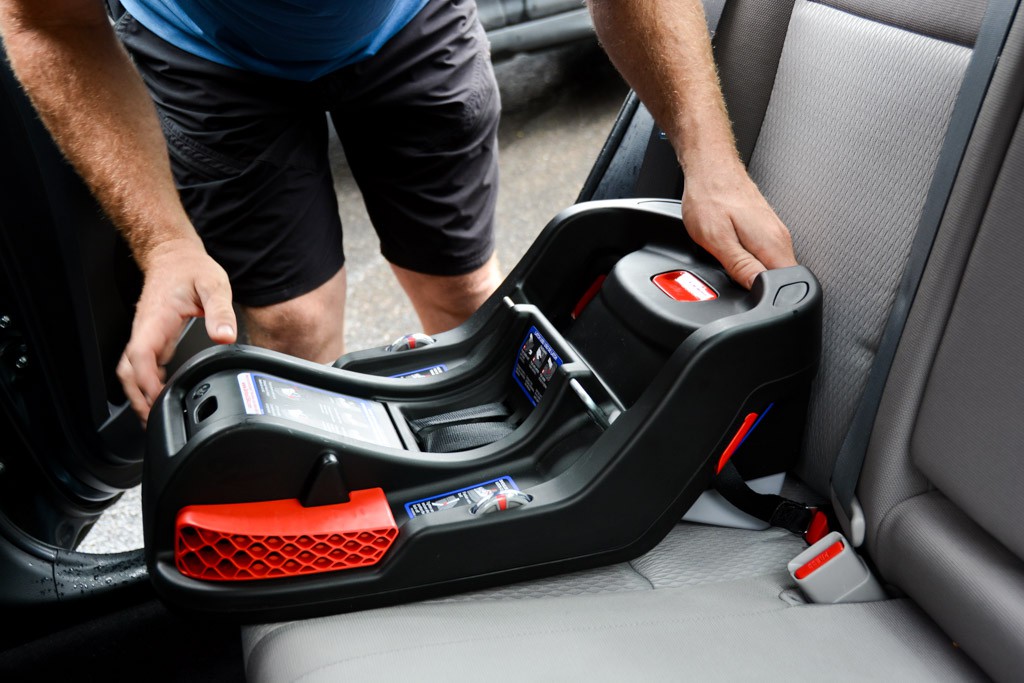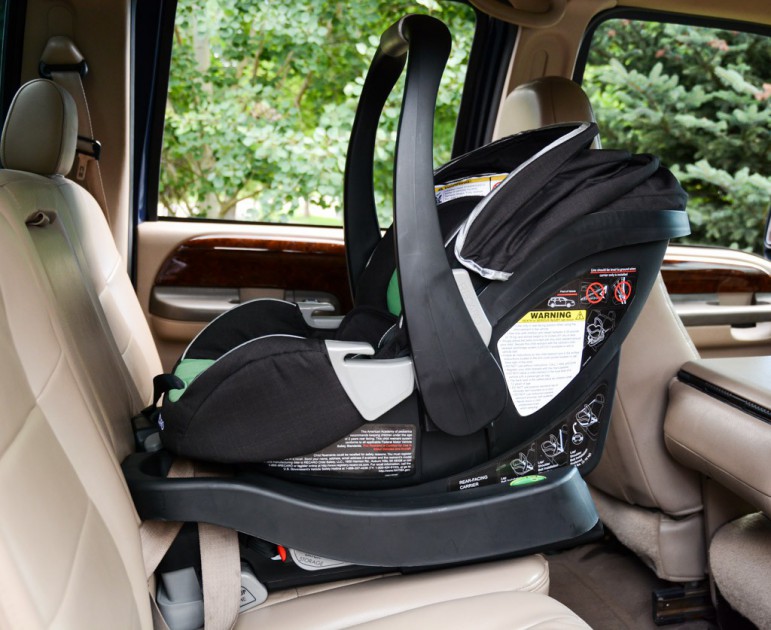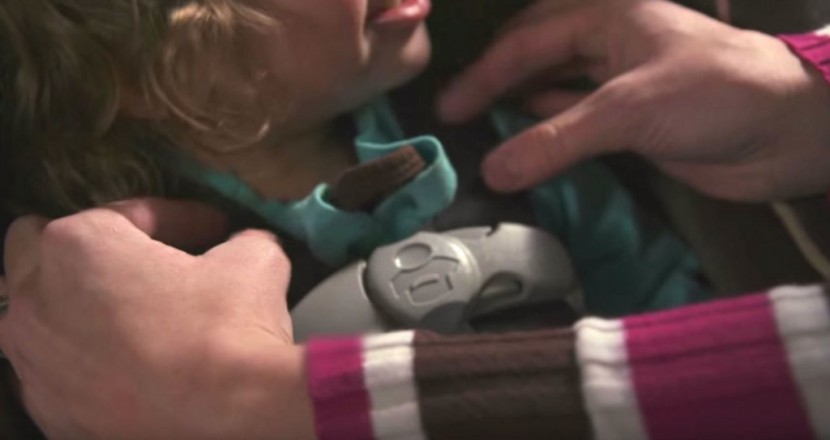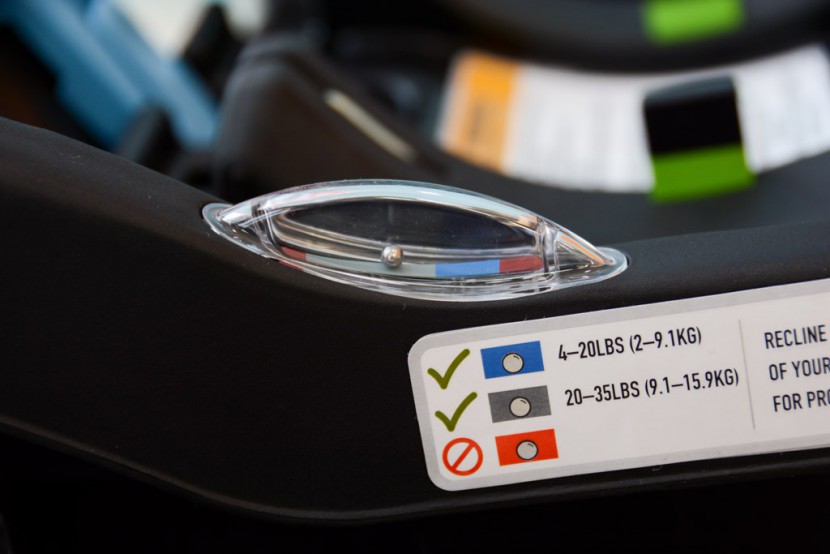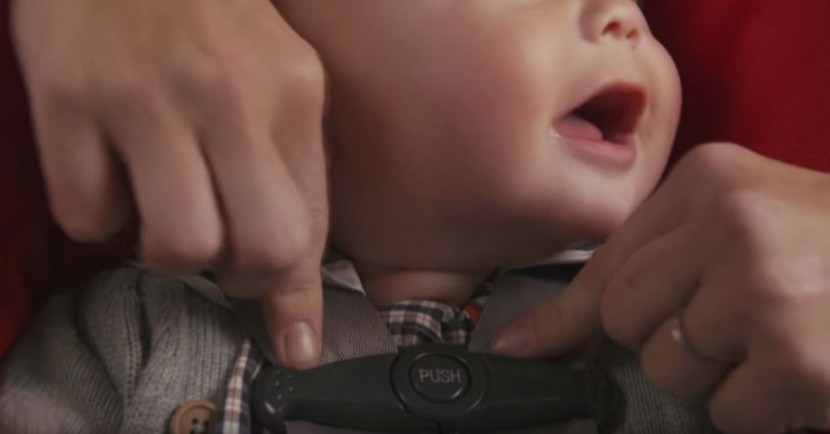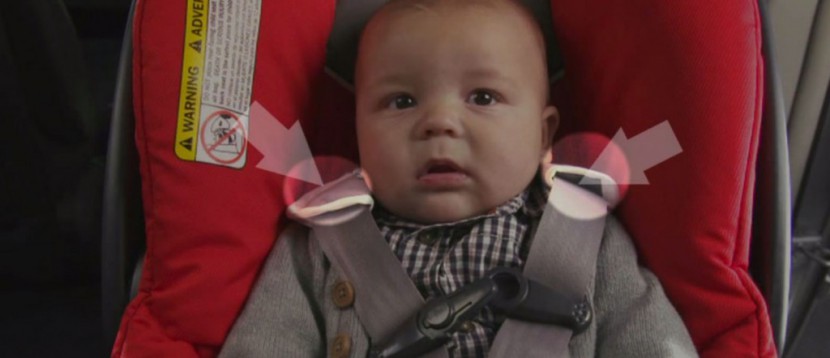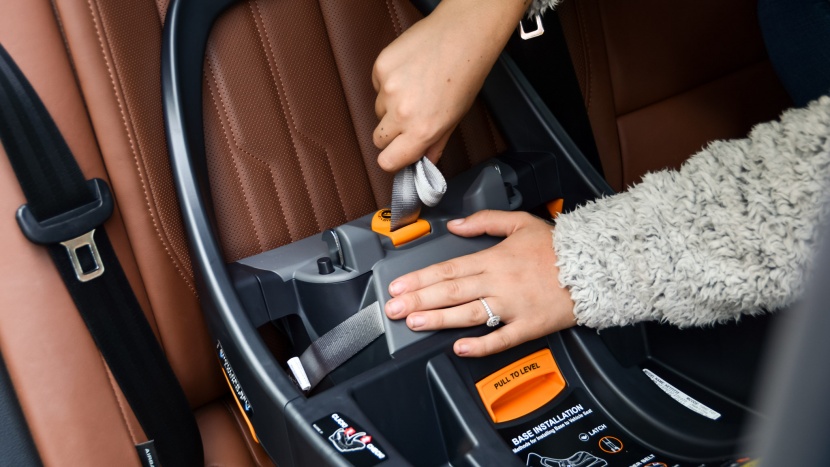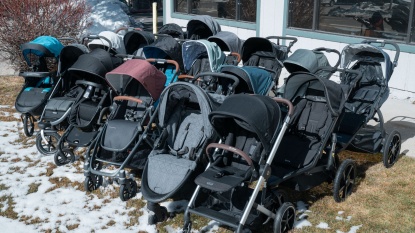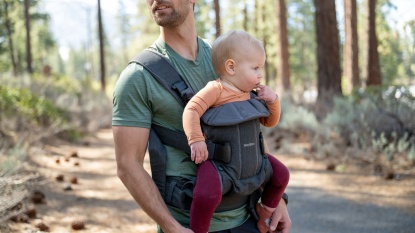This article is intended to augment our review, Best Infant Car Seats, to help parents be aware of and avoid the most common mistakes in car seat installation and use of harness systems.
Installation and Car Seat Safety
A car seat can only offer additional protection for your baby if it is installed correctly. Over half of all children killed are either unrestrained in the car or improperly restrained (FARS: Fatality Analysis Reporting System, NHTSA, 2007).
A 2013-2014 study conducted at the Oregon Health and Science University Hospital showed that 95 percent of parents taking newborns home from the hospital had made at least 1 error when installing their car seat, ones that could lead to injury or death in the event of an accident.
An earlier study by the National Highway Transportation Safety Administration (NHTSA) found that 84% of infant seats exhibited critical misuse, either in the installation of the seat or improper restraint of the infant.
To ensure you are installing your car seat correctly, you should read the car seat user's manual and your vehicle's manual. Why? The vehicle manual may list different attachment limitations than the car seat manual. The vehicle manual is the overriding authority on how to install the car seat and supersedes the car seat manual if the two conflict. Because some car seats require a change from using the LATCH to the seatbelt for installation when your child reaches a certain weight, it is important to know the vehicle's limitations. For example, if your car seat manual says LATCH installation can be used for children up to 60lbs, but your vehicle manual has a 50lb limit, you must use the seatbelt installation at 50 lbs, not 60.
The 9 Most Common Car Seat Mistakes to Avoid
This list of common installation and harnessing mistakes is based on findings from the OSHU study of parents taking newborn infants home from the hospital, in order of most common.
While not an installation error, we think it is important that you understand the risks involved with leaving your baby to sleep in an infant car seat carrier outside the car. This practice may seem convenient, especially if your little one has trouble falling asleep, but it can be potentially dangerous and is not recommended. Babies who sleep in car seats, swings, and other upright and semi-upright devices could be at risk for positional asphyxiation. Positional asphyxiation happens when a baby rests in a position that can block the airway and prevent them from breathing. This problem can potentially occur when a baby's head slumps forward and blocks the airway. In a 2015 studyof 31 babies under the age of 2 who died in a car seat, close to over half were caused by positional asphyxiation. You should always place your baby to rest on their back in their crib or bassinet, never leave them in their car seat.
#1. Harness too loose (69%)
The most common mistake made by parents of a newborn is leaving the harness too loose. Follow your car seat's instructions carefully to learn how to tighten the harness properly. Ensure it is tight enough to pass the "pinch test"; the harness is tight enough when you cannot pinch any extra harness material between your fingers and thumb at the shoulder.
#2. Car safety seat installed too loosely (43%)
The car seat base should be installed tight enough that it can only move an inch or less in any direction. Watch this video for tips on installing the base with LATCH, or this one for installing the base with the seat belt.
#3. Recline angle of car safety seat incorrect (36%)
Ensure that your car seat is installed at the correct reclined angle. Look in your car seat's manual for instructions on how to properly level it, and typically, a car seat has a built-in angle indicator, such as a level gauge or line, to assist you in this task.
#4. Retainer clip too low (34%)
The retainer clip should be placed at armpit level. When it is too low, there is a risk your baby will not be properly restrained in the event of an accident and may suffer a serious injury to the abdomen and internal organs.
#5. Safety belt used but not locked (23%)
Installing the base with a seat belt is more challenging, and while it is perfectly safe when correctly done, we recommend using LATCH anchors due to the increased simplicity and ease of installation. If you do choose to install the base using a seat belt, we encourage you to select one of the car seats that is relatively easy to install using a seat belt. When properly installed, you should not be able to move the base more than 1 inch in any direction. We'd also encourage you to visit your local car seat inspection station and have them check out your seat installation in your car before your baby is born. Visiting a car seat inspection station is a good idea in any case, but especially important if you are installing the base using the seat belt. The video below from The Car Seat Lady can help augment reading your car seat and vehicle owners manual and having your seat belt installation checked at an inspection station:
#6. Use of after-market product not approved with seat (20%)
Avoid the use of add-on products or accessories with your car seat unless your car seat manual approves their use. Car seats undergo extensive testing, and you may create an untested configuration by using an after-market product with the seat.
#7. Harness too high (18%)
Each seat will have its own way of adjusting the harness height. You must adjust the harness height to exit the back of the seat either at or below your baby's shoulder height. Read your car seat manual for specifics on how to adjust it and what height it should be for your baby.
#8. Incorrect spacing between car safety seat and vehicle front seat (17%)
The front seat position should be set to not interfere with the child restraint system. Leave a significant space between the front seat and the car seat, keeping in mind that the seat may move up to an inch based on the normal tightness of the straps, and in the event of an accident, the straps may stretch a bit more. Leaving a clear and free space between the carrier and the front seat makes it easier to be certain the car seat carrier is firmly clicked into and locked into the base and allows the child restraint system to properly operate in the event of an accident. Check your car seat and vehicle owner's manual to learn the exact spacing your seat requires.
#9. Caregiver not knowing how to adjust the harness (15%)
Anyone who will act as a caregiver for your infant must know how to properly use the car seat and how to properly harness your baby into the seat. Like many baby products, such as monitors and bottle warmers, you'll need to make sure that it is not just you who can operate them correctly, but grandparents and babysitters too.
Helpful Car Seat Installation Tips
Here are a few simple and easy tips to keep in mind. First off, take a look at this video below produced by the National Child Passenger Safety Board. While a bit dry, it is informative and covers both installations with the seat belt and with LATCH anchors:
Buy an Easy-to-Install and Use Car Seat
We believe that such common frequency of mistakes when installing or using a car seat should impact what car seat you ultimately decide to buy. Those seats that are easier to install and use have a real safety advantage. In our comprehensive infant car seat review, you'll see that we have gone to great lengths to examine ease-of-installation and ease-of-use as much as we examine crash test data.
Visit Your Local Car Seat Inspection Station
Once you've purchased a cart seat, we urge you to seek out your local car seat inspection station. You can locate a car seat installation check station near you by simply entering your zip code on the Safer Car website. Typically located at places like your local fire station or police station, car seat inspection locations are staffed by certified Child Passenger Safety Technicians who can help you learn how to properly install your car seat (or confirm that you've done it right) in your car, and help assure your baby's safety. It is free and a great national resource. Please take advantage of it.
Read the Manual
While manuals are never fun, you should break a sweat when it comes to car seats and read the manual carefully. In addition, you should read the section in your vehicle owner's manual that covers car seat installation. Parents should never assume they know how to install a seat without reading the manual, as each vehicle and seat has its own limitations and restrictions.
Conclusion
Given the high percentage of improperly installed car seats and/or restrained infants, it's crystal clear that it is really easy to make mistakes when installing a car seat, placing a carrier on the base, or adjusting the harness on the baby. We think parents might be prone to making honest mistakes and potential errors when they are in a rush, feeling emotional, or tired, which is likely how
most new parents feel every day.
We encourage you to take this matter seriously and plan a little extra time for installing and buckling the baby in properly every time you use the car seat. In addition, we suggest ALL parents take their new car seat and car to a checkpoint station before the baby is born to learn the ins and outs of proper car seat installation. The experts can help you determine the exact right location and installation options for your specific seat and vehicle. This takes the guesswork out of the process and lets parents feel confident in their seat installation. Parents should avoid moving the base after the technician installs it and should consider purchasing a second base if they plan to use the car seat in more than one car. The fewer steps parents have to manage each time baby goes for a ride, the fewer opportunities parents have to make a mistake.
